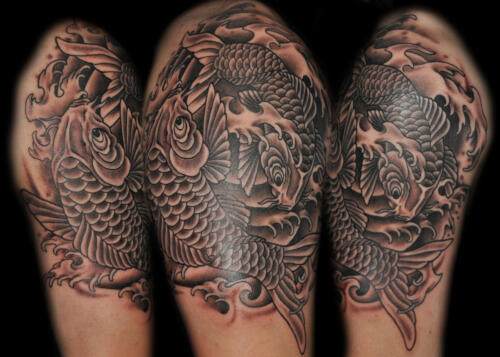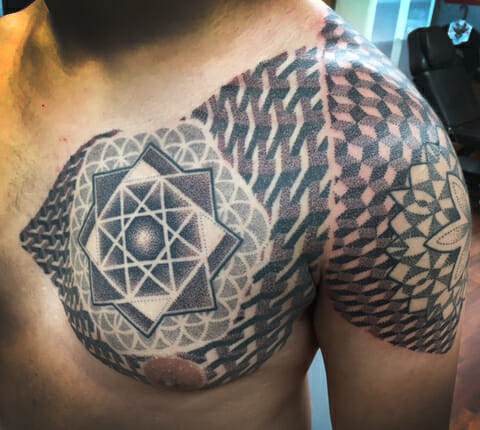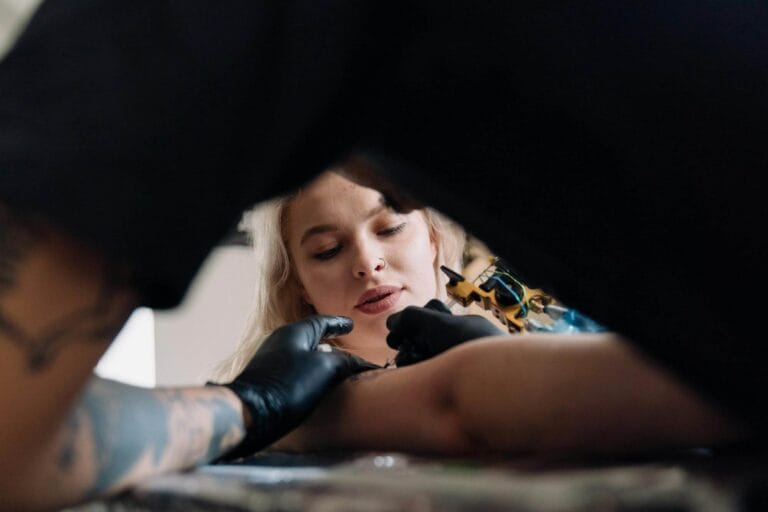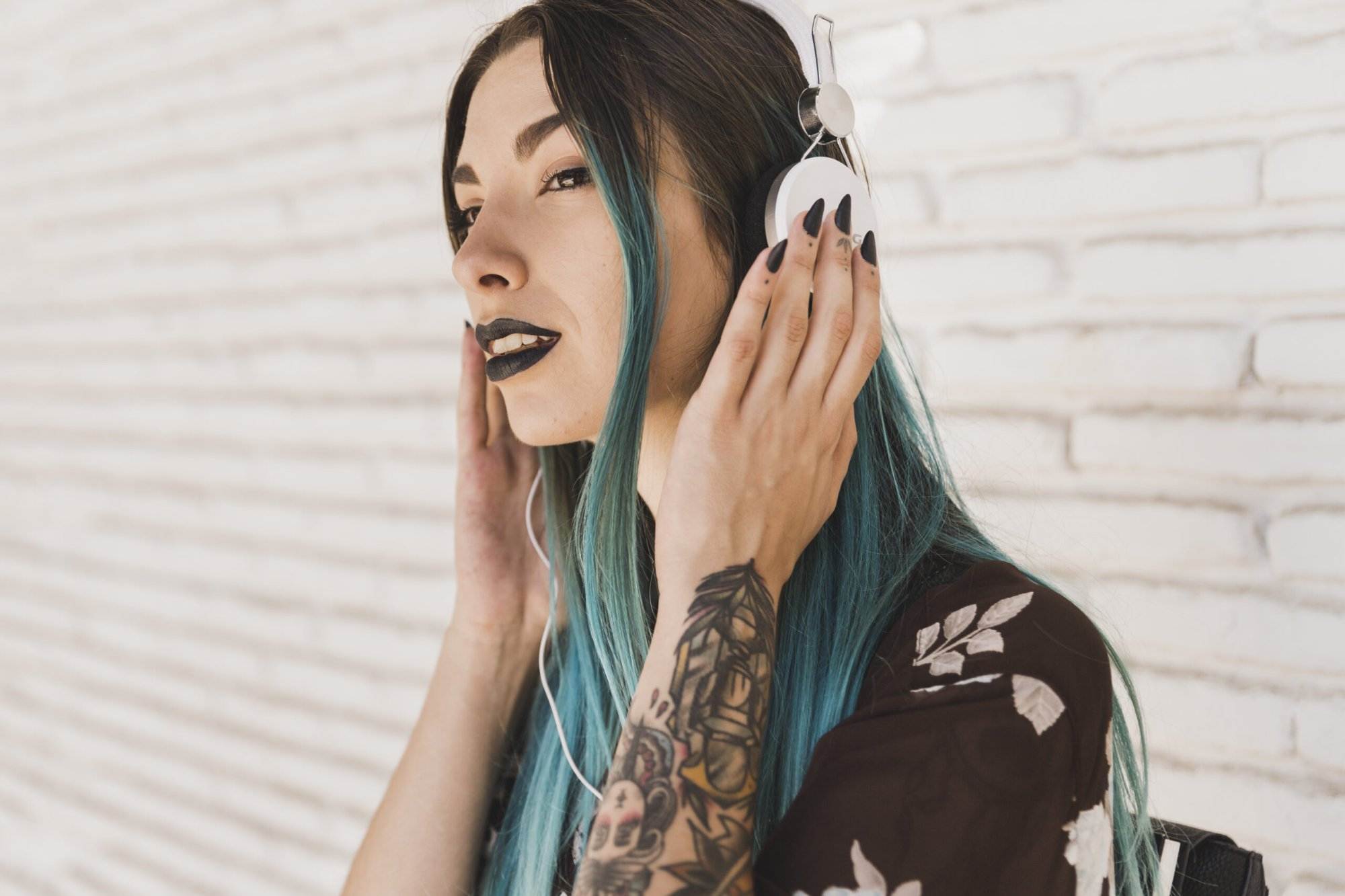
Introduction
History of Tattoos
Tattooing is an ancient art form, with roots that can be traced back thousands of years. Historical evidence suggests that tattoos have been a part of human culture since at least 3000 BC. From mummified remains discovered in Egypt showcasing intricate tattoos, to the tribal markings of indigenous cultures around the world, tattoos have served various purposes throughout history, including:
- Ritualistic: Many ancient tribes adorned their bodies with tattoos as a rite of passage, signifying milestones or achievements within their community.
- Protection: Some cultures believed that tattoos had protective qualities, warding off evil spirits or bad luck.
- Status Symbols: Tattoos often indicated social status or rank, clearly distinguishing warriors or leaders from the rest.
As societies evolved, so did the meanings behind tattoos, transforming into symbols of rebellion, self-identity, and personal storytelling.
Importance of Self-Expression through Tattoos
In contemporary society, tattoos have become a powerful medium for self-expression. They allow individuals to communicate their identities, beliefs, and experiences without uttering a single word. The notion of wearing one’s story on their skin has never been more relevant. Here are notable ways tattoos serve as a form of self-expression:
- Personal Narratives: Many choose tattoos to commemorate important life events, such as births, losses, or overcoming challenges. These designs tell unique personal journeys.
- Cultural Identity: Tattoos can reflect one’s heritage or connection to their culture, fostering a sense of belonging and pride.
- Artistic Expression: For some, tattoos are a canvas for artistic creativity, enabling individuals to showcase their style or affinity for certain art forms.
Tattoos thus bridge the gap between past traditions and modern-day self-expression, making them a significant form of communication in today’s world.
Finding Inspiration for Your Tattoo Design
Reflecting on Personal Experiences
Once the decision to get a tattoo is made, the journey to finding the perfect design can be exciting yet overwhelming. One of the best places to start is by reflecting on personal experiences. Each individual’s life is filled with unique moments, and translating these memories into art can create a deeply meaningful tattoo. Consider the following aspects:
- Milestones: Key moments, such as graduations, weddings, or the birth of a child can serve as powerful reminders. A design related to these events can capture the essence of that time.
- Transformational Experiences: Challenges overcome, such as battling illness or going through a significant life change, can inspire a tattoo symbolizing strength and resilience.
- Passions and Hobbies: Whether it’s a love for music, travel, or literature, expressing one’s passions through tattoo art can create a personalized representation of what matters most.
Taking time to ponder these elements can inspire designs that are not only beautiful but also deeply personal.

Drawing Inspiration from Symbolism and Meanings
In addition to personal experiences, many individuals turn to symbols and meanings to guide their tattoo designs. The world of tattoo art is rich with symbolism, and tapping into this can result in designs that carry significant weight. Here are some common themes to consider:
- Nature: Elements like trees, flowers, and animals often symbolize growth, life, and connection to the earth. A lotus flower, for instance, represents purity and resilience through struggles.
- Cultural Symbols: Many cultures have unique symbols, each with specific meanings. Researching these can lead to inspiration that resonates on a cultural level.
- Words and Quotes: Often, a phrase or a quote can encapsulate one’s mindset or philosophy. Choosing a meaningful quote can serve as a constant light of inspiration.
Combining personal narratives with rich symbolism can create a tattoo that not only conveys a story but also resonates profoundly with one’s identity.
Researching Tattoo Artists and Studios
Understanding Different Tattoo Styles
As the journey to your tattoo design progresses, an equally important step is researching tattoo artists and their respective styles. Each tattoo artist specializes in particular techniques, and understanding these can help align your vision with the right talent. Here are some popular tattoo styles to consider:
- Traditional: Characterized by bold lines and vibrant colors, traditional tattoos often feature classic motifs like roses, skulls, and anchors. This style celebrates the roots of tattoo art.
- Realism: If you want a lifelike representation of a subject, realism is the way to go. This style demands precision and attention to detail, making it perfect for portraits or intricate designs.
- Watercolor: Known for its beautiful, soft colors that mimic watercolor painting, this style is trendy for those looking for a more ethereal look, often paired with outlines or silhouettes.
- Geometric: This style uses shapes and patterns to create visually appealing designs. It can range from simple to intricate, allowing for modern interpretations of tattoos.
Understanding these styles can help you articulate your preferences when discussing your vision with potential artists.
Tips for Selecting the Right Tattoo Artist
Choosing the right tattoo artist is essential to ensuring that your tattoo is not only beautiful but also reflects your vision accurately. Consider the following tips when making your selection:
- Review Portfolios: Take the time to browse through artists’ portfolios, noting their style, craftsmanship, and whether their work resonates with your desired design.
- Check Reviews: Online reviews can provide insights into others’ experiences. Look for positive feedback regarding professionalism, cleanliness, and overall satisfaction.
- Consultation: Schedule a consultation with interested artists. This meeting is a great opportunity to discuss your concept, gauge their understanding, and ensure you feel comfortable with their approach.
- Facility Cleanliness: A reputable tattoo studio follows strict hygiene protocols. Ensure the environment is clean and well-maintained.
By thoroughly researching tattoo styles and selecting the right artist, individuals can embark on a fulfilling journey toward getting the tattoo of their dreams.
Planning Your Tattoo: Size, Placement, and Design
Considerations for Tattoo Placement
As the excitement builds around getting a tattoo, planning its size, placement, and design becomes crucial. The location of your tattoo not only affects its visibility but also influences how it feels during the healing process. Here are several considerations to keep in mind regarding placement:
- Visibility: Think about how often you want your tattoo to be visible. Areas like the forearm or wrist are easily shown off, while places like the back or thigh can be more private.
- Pain Level: Different body parts have varying pain levels during tattooing. Areas with more flesh and muscle, such as the upper arm, tend to be less painful than spots with thinner skin and more bone, like the ribs or ankles.
- Future Changes: Consider how a tattoo might interact with future life changes, such as weight fluctuations or professional changes. Choosing a site that can adapt is wise for long-term satisfaction.
- Professionalism: If tattoos are not allowed in your workplace, contemplate more concealed areas, such as the back or side of the torso, to avoid potential conflicts.
Customizing Your Tattoo Design
Once you’ve settled on the placement, it’s time to customize your tattoo design to ensure it’s uniquely yours. Tailoring your tattoo can elevate it from just a piece of art to a true reflection of your journey. Here are ways to personalize your design:
- Incorporate Meaningful Symbols: Merge different motifs that resonate with specific aspects of your life. For example, combining a personal symbol with elements of nature can create a rich narrative.
- Choose Colors Wisely: Color choices can dramatically change the vibe of a tattoo. If you’re drawn to certain hues, consider how they represent your personality or emotions.
- Consult with Your Artist: Engage in a dialogue with your tattoo artist. A skilled professional can offer suggestions and help refine your design to best suit your vision and anatomy.
In this way, planning your tattoo’s placement and customizing its design can result in a meaningful piece of art that you will cherish for years to come.
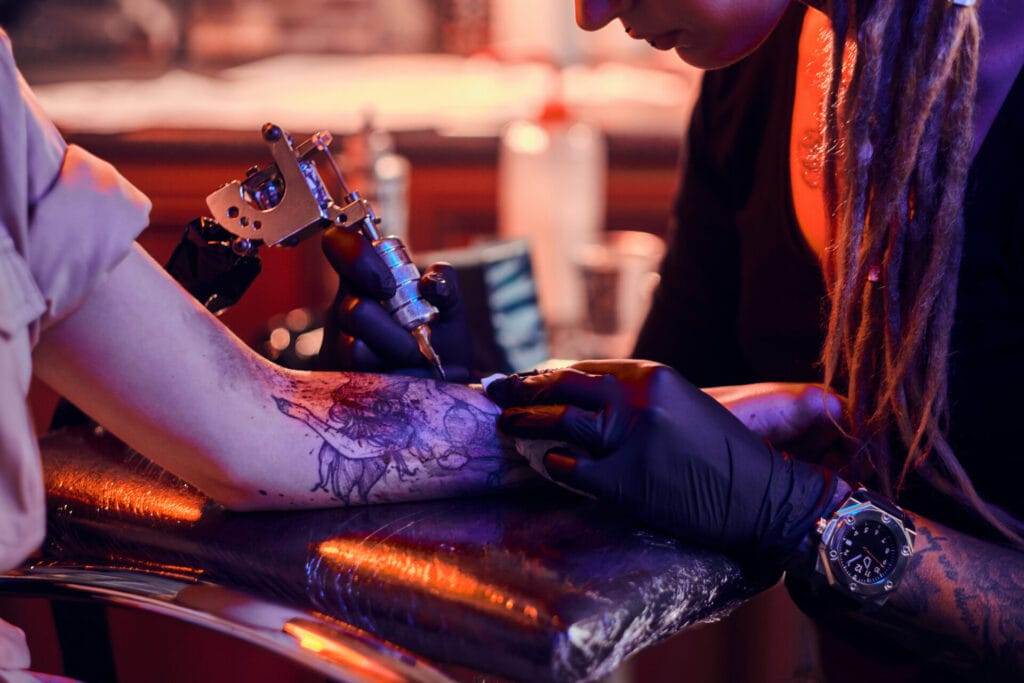
The Tattooing Process: What to Expect
Preparing for Your Tattoo Session
As the day of your tattoo appointment approaches, preparation plays a key role in ensuring a smooth experience. Understanding how to get ready can make a significant difference in your comfort and overall satisfaction. Here are some essential tips for preparing for your tattoo session:
- Stay Hydrated: Drink plenty of water leading up to your appointment. Staying hydrated helps your skin recover more effectively and can reduce sensitivity during the process.
- Avoid Alcohol and Blood Thinners: Refrain from consuming alcohol or taking blood-thinning medications (like aspirin) for at least 24 hours before your appointment. These substances can make the tattooing process more painful and increase bleeding.
- Wear Comfortable Clothing: Choose attire that allows easy access to the tattoo area while ensuring you feel relaxed. For example, if you’re getting a tattoo on your arm, a short-sleeve shirt may be ideal.
- Get Plenty of Rest: Arriving well-rested can help you manage any potential anxiety and keep your energy levels up throughout the process.
Understanding the Tattooing Process
Once everything is prepped, it’s time to dive into the tattooing process itself. Knowing what to expect can alleviate anxiety and help you feel more in control. Here’s a breakdown of the typical steps involved:
- Consultation: Upon arrival, your artist will usually reconfirm your design and placement. This is your opportunity to voice any last-minute changes or concerns.
- Stenciling: Your artist will create a stencil of the design and apply it to your skin to outline where the tattoo will go. This step helps ensure accurate placement.
- Tattooing: Using a tattoo machine, the artist will begin the inking process. Depending on the size and detail of the design, this can take anywhere from a few minutes to several hours.
- Aftercare Discussion: Once the tattoo is complete, the artist will provide instructions on how to care for your new tattoo to promote healing and ensure vibrant results.
By understanding both the preparation and the tattooing process, individuals can approach their appointment with confidence and excitement, ready to embrace their new body art.
Caring for Your New Tattoo
Tattoo Aftercare Tips
Once the thrill of getting a tattoo has settled, the next important phase involves caring for it. Proper aftercare is crucial to ensure that your new artwork heals beautifully and maintains its vibrancy. Here are some essential aftercare tips to follow:
- Keep It Clean: For the first couple of weeks, gently wash the tattoo with mild soap and cool water. Pat it dry with a clean towel—don’t rub!
- Moisturize: After washing, applying a thin layer of fragrance-free moisturizer or tattoo aftercare ointment can keep the area hydrated. Look for products specifically designed for tattoo care to avoid irritating ingredients.
- Avoid Swimming and Soaking: Refrain from soaking your tattoo in pools, hot tubs, or baths until fully healed. Water exposure can lead to infections or fading.
- Protect from the Sun: Keep your tattoo out of direct sunlight, which can cause fading. Once healed, consider using sunscreen on the tattooed area to keep colors vibrant.
Common Mistakes to Avoid During the Healing Process
Navigating the healing process can be tricky, and avoiding common mistakes is key to ensuring your tattoo looks great for years to come. Here are some pitfalls to be cautious of:
- Picking at Scabs: As your tattoo heals, it may develop scabs. Resist the urge to pick at them, as this can lead to patchy healing or even scarring.
- Over-Moisturizing: While hydration is important, applying too much lotion can suffocate the tattoo and lead to issues. Stick to a thin layer.
- Wearing Tight Clothing: Clothing that rubs against the tattoo can irritate the skin and impact healing. Opt for loose-fitting attire during the healing period.
- Ignoring Signs of Infection: If you notice excessive redness, swelling, or discharge, consult your tattoo artist or a healthcare professional immediately.
By following these aftercare tips and avoiding common mistakes, individuals can ensure that their tattoo heals properly and remains a stunning part of their expression for a lifetime.
Reflecting on the Meaning of Your Tattoo

How Your Tattoo Represents Your Personal Journey
As time passes after getting a tattoo, it often becomes a poignant reminder of your personal journey. Each tattoo can serve as an emblem of growth, resilience, and transformation, encapsulating experiences that shape who you are. Here are ways to consider how your tattoo represents your unique path:
- Milestones and Achievements: Many choose tattoos to commemorate significant life events, such as graduating from school, overcoming challenges, or celebrating love and friendships. These inked reminders act as a personal trophy, marking your accomplishments.
- Connection to Emotions: Tattoos can embody specific emotions tied to events in one’s life. For instance, a design inspired by a loved one can evoke feelings of love, loss, or gratitude, making it a constant source of inspiration.
- Cultural Heritage: A tattoo may reflect ties to cultural roots or family heritage. It can act as a bridge connecting individual identity to broader lineage, celebrating your uniqueness while honoring your ancestry.
Embracing the Significance of Your Tattoo Design
Taking a moment to embrace the significance of your tattoo design can further enhance its meaning in your life. Understanding that it’s more than just an art piece can deepen your appreciation and connection to it. Consider these reflective points:
- Storytelling: Each design has a story. Embrace the narrative behind your tattoo, whether it represents a journey of self-discovery or an homage to something or someone meaningful. Sharing this story with others can foster connection and understanding.
- Growth and Evolution: Just as you evolve as a person, so can your interpretation of your tattoo. The significance may shift over time, reflecting growth or changes in your life. Embrace these changes; they are part of your story.
- Celebrating Individuality: Your tattoo is a declaration of who you are. Embrace its uniqueness, as it distinguishes you from others and celebrates your individuality.
Ultimately, reflecting on the meaning of your tattoo enriches your experience and fosters a deeper connection to your personal narrative and journey through life.

